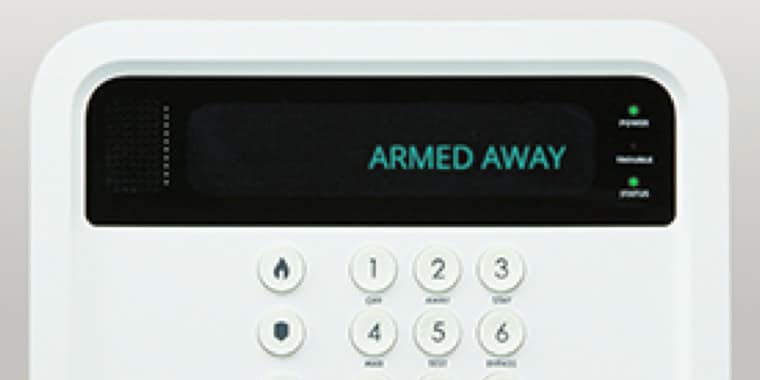Securing your home, loved ones, and treasured possessions would seem to have little downside—unless of course, you’re making a horror film. There’s a reason that the classic setting for scary movies is an abandoned, decrepit house: nonexistent home security exponentially multiplies the possibilities for fright!
With scary movie season upon us, we wondered: how would ADT change classic horror-movie scenes? We came up with ten: can you think of more?
#1: Home Invasion
Countless horror-movie plots would be stopped in their tracks by a professionally installed home security system. The deranged ex-lover can’t break in and cook your pet rabbit if they can’t get past the alarm-triggering sensors on the windows and doors. Neither can the maniacal serial killer, the murderous clown, or the literal monster.
#2: The Call Is Coming from Inside the House
For one thing, phones don’t work like that anymore! But even a modern update to this classic scene—say, someone creepily calling from a cell phone in your attic—falls flat if the home in question is well-secured. With motion-activated security cameras installed, the bogeyman would be detected well before they got in. In contemporary horror movies, the scariest threat from cell phones is that they might die, or maybe the basement has poor cell reception and the only landline is upstairs. Even then, as long as the family’s security system is monitored 24 hours a day, an inability to call 911 can’t stop the police from coming to the rescue: help will be alerted automatically when an alarm is triggered.
#3: Jump Scare
It’s a staple of every horror flick: suddenly, someone—or something—appears where they weren’t supposed to, and everyone screams. The key ingredient? Darkness. That’s what creates the suspense—and the surprise. With motion-activated smart lighting, you lose both—and gain a well-lit and well-secured home.
#4: Ill-Timed Key Fumble
This trope is more subtle than the iconic scenes listed above, but it’s every bit as common in the horror genre. Monsters and murderers aren’t the only source of terror in horror movies: another is the flaws and failings of the people running away from them. When characters are running for their lives and desperately trying to unlock their front door, they’re likely to make a mistake—perhaps they’re shaking too badly to operate the lock—and then it’s too late. This grisly fictional fate could be avoided with a wireless keychain remote. With the press of a button, your system is disarmed—and you can arm it again just as easily. It’s helpful whether you’re carrying groceries... or running from Freddy Krueger.
#5: “No One Can Help You Now”
From killer dolls to havoc-wreaking leprechauns, horror movie directors have imagined innumerable threats to innocent lives. They’ve been much less creative in imagining how the people in their films might protect themselves. Facing a potential victim who enjoyed the advantage of a wearable panic button—enabling them to effortlessly summon help in any situation—even the most tenacious horror villain would be hard-pressed to render their prey isolated and helpless.
#6: Absurdly Ineffective Barricade
Nobody’s perfect. But characters in horror movies seem to make poorer decisions than most. We’ve all watched them try to stop the bad guy with a tactic that is doomed to fail—perhaps by blocking a door with whatever random objects happen to be sitting around. Instead, imagine if those characters had the power to control their entire security system and all their smart-home devices with just their voice – like integrating Alexa voice integration with your ADT system. Plucky heroes, 1; scary villains, 0.
#7: Haunting Experience
In the first hour of every horror movie, the main character tries to convince people they’ve seen something terrifying—and they refuse to believe it. This frustration could be fixed with an automated smart-home security system: motion-activated indoor and outdoor cameras can automatically send relevant video clips to the homeowner. Presented with such evidence, the surly police chief would have no choice but to accept: yes, that really is a murderous garden gnome.
#8: “Dad? Is that you?”
Questions of identity often arise in horror movies. People aren’t who they say they are; impostors may try to steal the identity of the main characters’ loved ones. With 24/7 identity theft protection, even the darkest reaches of the dark web would be useless to horror-flick bad guys attempting to impersonate the hero’s family.
#9: “Something’s not right...”
The more patient villains in horror movies will wait until their targets leave the house, only to sneak in and prepare a trap. With smart-home device scheduling, these characters could simply create the appearance of an occupied home with scheduled lighting—even while they’re on vacation. Even monsters in horror movies hate to be inconvenienced—and they’d be waiting a long time before a properly secured home appeared to be unoccupied.
#10: The Terrifying Basement
Children have a particularly difficult time in horror movies. Somehow, they always end up needing to venture into the basement—and the basement is always poorly lit. Of course, their parents are never home while this is happening. Horror-movie parents with a smart-home mobile app can rescue their kids from this terror no matter where they are: with live streams of indoor video feeds, these parents can easily check in on their child—and remotely turn on a light, for Pete’s sake.
+++
Horror movies don’t usually reflect the reality of home. In actual domestic life, people seek calm, quiet and safety. It makes for a boring movie—and priceless peace of mind for you and your family.





